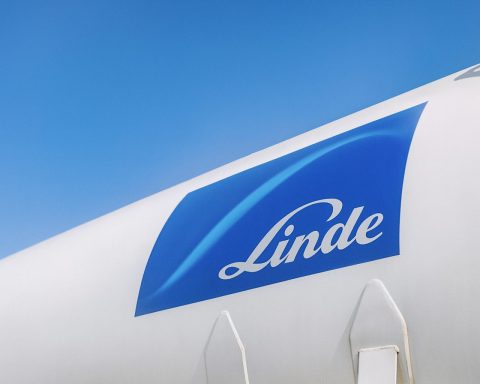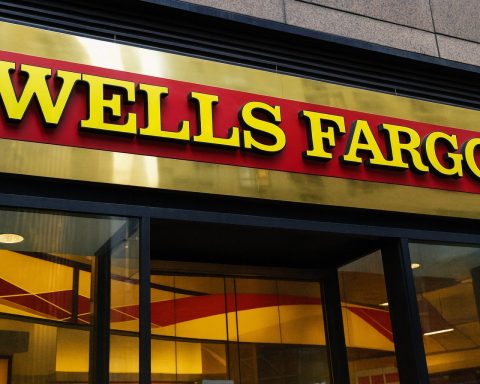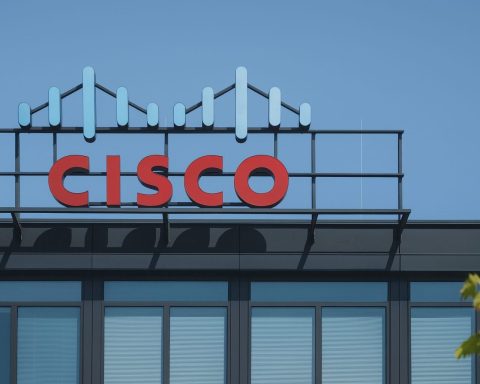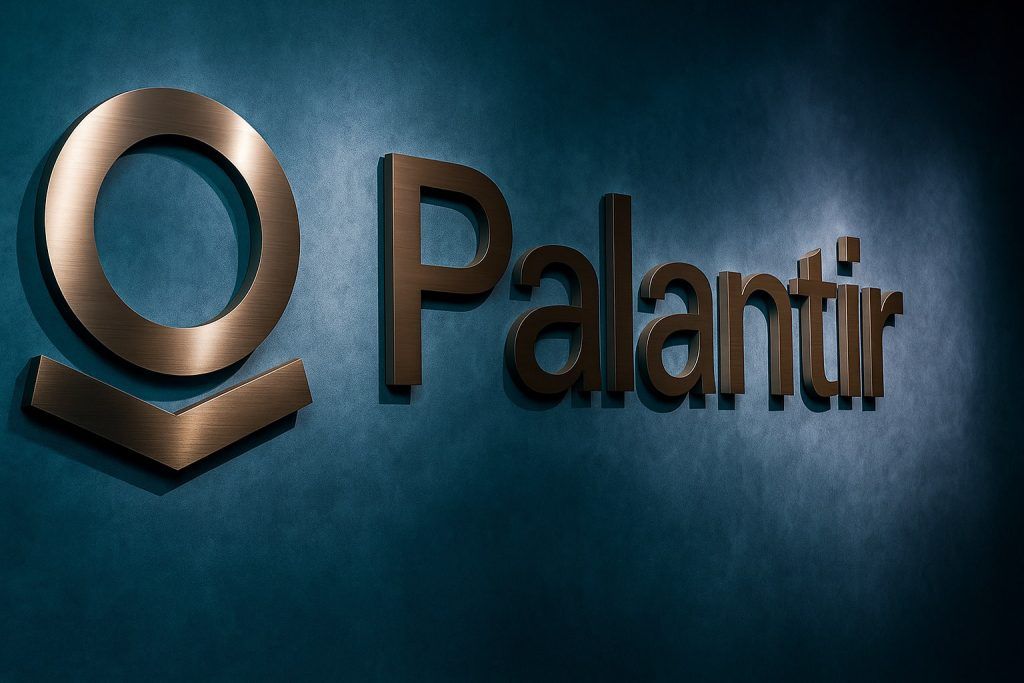November 20, 2025 — KLIC stock update
Kulicke & Soffa Industries, Inc. (NASDAQ: KLIC) is trading sharply higher on Thursday after the semiconductor assembly equipment maker delivered a better‑than‑expected fourth‑quarter report and a stronger outlook for early fiscal 2026.
As of early afternoon trading on November 20, KLIC shares are around $39.23, up roughly 11% on the day, with an intraday high near $41.22 and volume already approaching 900,000 shares. The move extends a 12% after‑hours surge on Wednesday evening after the company beat Wall Street estimates on both earnings and revenue. [1]
Key takeaways for KLIC stock today
- KLIC is up about 11% in Thursday’s session, trading near $39–40 after a strong post‑earnings pop. [2]
- Q4 FY2025 revenue came in at $177.6 million, down about 2% year over year but up nearly 20% sequentially, with non‑GAAP EPS of $0.28 topping consensus of $0.22. [3]
- Management guided Q1 FY2026 revenue to about $190 million (± $10 million) and expects non‑GAAP EPS around $0.33 (±10%), signaling further improvement in demand. [4]
- Earnings slides and commentary point to full‑year FY2026 revenue of roughly $730–$740 million, implying low‑teens growth from FY2025 and highlighting opportunities in AI‑driven advanced packaging and power electronics. [5]
- The rally comes as the company navigates a CEO transition, with long‑time CFO Lester Wong now serving as Interim CEO following news that CEO Dr. Fusen Chen will retire for health reasons effective December 1, 2025. [6]
- Fresh 10‑K disclosures show FY2025 revenue down 7.4% year over year, but a sharp improvement from the prior‑year loss to essentially breakeven, supported by higher gross margins and a large share‑repurchase and dividend program. [7]
KLIC stock today: double‑digit rally after an earnings surprise
KLIC is one of Thursday’s standout movers in the semiconductor equipment space. The stock is trading about $3.94 higher on the day, a gain of just over 11%, after opening around $40 and swinging between roughly $38.5 and $41.2 in early afternoon U.S. trading.
According to price‑tracking data, KLIC had already jumped more than 12% in Wednesday’s after‑hours session, closing the extended session around $38.99 once investors digested the Q4 numbers. [8] The latest intraday move pushes the stock slightly above the median 12‑month analyst price target of about $37.50, based on recent targets from B. Riley ($35) and Needham ($40). [9]
The rally is also unfolding against a supportive backdrop for chip‑related names generally, with strong results from Nvidia helping lift sentiment across the semiconductor complex. [10]
Q4 2025 earnings: modest year‑on‑year dip, but a clear sequential rebound
Kulicke & Soffa’s fiscal fourth quarter (ended October 4, 2025) was not a blockbuster in absolute terms, but it was decisively better than investors had feared.
Headline numbers
From the company’s official release: [11]
- Net revenue: $177.6 million
- Down from $181.3 million in Q4 FY2024 (about 2% lower year over year)
- Up from $148.4 million in Q3 FY2025 (roughly 20% sequential growth)
- GAAP net income: $6.4 million, or $0.12 per diluted share
- Non‑GAAP net income: $14.9 million, or $0.28 per diluted share
- Gross margin: 45.7%
Third‑party estimates suggest Wall Street had been expecting revenue around $168 million and non‑GAAP EPS of roughly $0.22. K&S beat both lines, delivering an EPS surprise of just over 27% and a revenue beat of about 4–5%, according to Zacks and Investing.com. [12]
Non‑GAAP EPS was down from $0.34 in the prior‑year quarter, reflecting the still‑subdued phase of the semiconductor capital‑equipment cycle, but the strong sequential rebound in revenue and profitability is what the market is rewarding today. [13]
Full‑year 2025: a tough cycle, but margins and cash flow improved
The newly released 2025 10‑K and K&S’s press release together paint the picture of a year spent clawing the business back to health after a deep down‑cycle: [14]
- FY2025 net revenue: $654.1 million, 7.4% lower than FY2024
- FY2025 gross margin: 42.5%, up from 38.1% a year earlier, helped by a better product mix and lapping prior inventory charges
- FY2025 net income: essentially breakeven at about $0.2 million, versus a $69 million loss in FY2024
- Cash from operations: $113.6 million; adjusted free cash flow of $96.6 million
- Shareholder returns:
- Approximately 2.4 million shares repurchased during FY2025 for about $96.5 million
- New buyback program under which ~1.8 million of those shares were retired, and dividends totaling $0.82 per share were declared for the year
The combination of improved margins, a return to profitability, and substantial cash generation — even in a down revenue year — helps explain why investors are reacting positively now that the worst of the cycle appears to be behind the company.
2026 outlook: guidance hints at an early‑stage upturn
The market’s enthusiasm is not just about the Q4 numbers; it’s also about what management thinks comes next.
Q1 FY2026 guidance
For the first quarter of fiscal 2026 (ending January 3, 2026), Kulicke & Soffa expects: [15]
- Net revenue: about $190 million ± $10 million (i.e., $180–$200 million)
- GAAP diluted EPS: roughly $0.18 ± 10%
- Non‑GAAP diluted EPS: roughly $0.33 ± 10%
At the midpoint, this revenue outlook implies a modest sequential increase from Q4’s $177.6 million, reinforcing management’s message that order activity and end‑market conditions are improving.
Full‑year FY2026: low‑teens growth and AI‑driven demand
In a separate summary of the company’s earnings presentation, management signaled that FY2026 revenue is expected to land in the $730–$740 million range, roughly 12–13% growth over FY2025’s $654.1 million. The commentary ties this growth to: [16]
- Continued recovery in core semiconductor assembly markets
- Ongoing technology transitions in advanced packaging, including solutions that support AI workloads
- Capacity expansion in areas like automotive, power semiconductors and industrial electronics
If K&S can deliver on that outlook, FY2026 would mark a meaningful turn in the company’s through‑cycle performance, with revenue climbing and profitability coming off a much stronger margin base than in prior years.
CEO transition: continuity amid change
The upbeat guidance is arriving at a delicate moment for leadership.
On October 28, Kulicke & Soffa announced that President and CEO Dr. Fusen Chen will retire effective December 1, 2025, for health reasons, stepping down from both the CEO role and the board but remaining as an advisor for a year. [17]
At the same time, the board appointed Lester Wong — the company’s Executive Vice President of Finance & IT and long‑time Chief Financial Officer — as Interim CEO, while he continues to serve as CFO. The board has begun a search for a permanent CEO, considering both internal and external candidates. [18]
In its transition announcement, the board highlighted K&S’s positioning in: [19]
- Advanced packaging and dispense technologies
- Areas tied to AI, electric vehicles, and power semiconductors
- Next‑generation platforms such as ATPremier MEM Plus™, fluxless thermocompression bonding, and chiplet integration
For investors, the leadership change introduces governance and execution risk, especially as Wong temporarily balances both CEO and CFO responsibilities. However, the board’s emphasis on continuity — and the fact that the transition came alongside a reaffirmation of Q4 guidance and now a solid print — helps to ease some of those concerns.
Strategy and fundamentals: focusing on core semiconductor assembly and advanced packaging
Kulicke & Soffa’s business is deeply tied to the back‑end of the semiconductor manufacturing process, supplying equipment for tasks such as wire bonding, wedge bonding, advanced dispensing, and other assembly and packaging steps. The company’s own description emphasizes its role in enhancing device performance across automotive, compute, industrial, memory, and communications markets. [20]
Recent filings and press releases underscore several strategic themes:
1. Pivoting away from non‑core electronics assembly
The 2025 10‑K confirms that K&S has decided to exit its Electronics Assembly (EA) equipment business to focus on core semiconductor opportunities. The wind‑down began in the third quarter of FY2025 and is expected to be largely complete by fiscal 2026, aside from ongoing support for existing customers. [21]
This move is designed to improve through‑cycle profitability by concentrating capital and R&D on segments where the company sees better structural growth and competitive advantage.
2. Investing in new platforms for advanced packaging and AI
Alongside core ball‑ and wedge‑bonding tools, K&S is rolling out a series of new products aimed at higher‑value applications: [22]
- ACELON™, a next‑generation precision dispensing platform for semiconductor, SMT and automotive assembly, featuring sub‑20‑micron placement accuracy and AI‑driven auto‑parameter tuning to optimize processes in real time.
- ATPremier MEM PLUS™ for advanced memory applications, and Asterion‑PW for power devices, targeting fast‑growing power and high‑reliability markets.
These offerings are designed to tackle tighter tolerances, larger substrates, and higher component densities, all of which are becoming more important as AI accelerators, EV power electronics, and advanced memory packages grow more complex.
3. A highly global — and China‑exposed — revenue base
K&S’s 10‑K highlights that about 90% of FY2025 revenue came from customers outside the U.S., primarily in Asia, with roughly 53.5% of revenue tied to customers headquartered in China. [23]
That footprint gives the company strong exposure to the world’s largest semiconductor manufacturing hubs but also exposes it to:
- Export controls and trade policy changes
- Currency volatility, particularly in Asian currencies
- Geopolitical risks, including ongoing tensions and conflicts
The company notes that it maintains hedging programs and a strong balance sheet — including more than $500 million in cash, cash equivalents and short‑term investments as of October 4, 2025 — to help absorb shocks. [24]
How Wall Street and big money are positioned on KLIC
Analyst sentiment and price targets
Before this week’s earnings report, Zacks ranked Kulicke & Soffa as a “Hold” (Rank #3) and pointed out that the stock had underperformed the broader market, with shares down about 23.8% year‑to‑date versus a roughly 12.5% gain for the S&P 500 as of Wednesday’s close. [25]
More recent aggregated data from Quiver Quantitative show: [26]
- One Buy rating from a covering firm in recent months and no Sell ratings
- A median 12‑month price target of $37.50, based on two published targets
- $35 from B. Riley (October 10, 2025)
- $40 from Needham (August 7, 2025)
With KLIC now trading around $39, the stock is slightly above that median target and not far from the top of the current published range, suggesting that today’s move has already priced in some of the improved outlook.
Institutional and insider activity
Quiver’s latest holdings data indicate mixed institutional positioning: in the most recent quarter, about 143 institutional investors increased their KLIC stakes, while 183 reduced them. Several large asset managers made sizable adjustments in both directions, reflecting differing views on the timing and strength of the next cycle. [27]
On the insider front, the same dataset shows one open‑market sale in the past six months, with a senior vice president selling around 30,000 shares. There have been no recent insider purchases reported in that window. [28]
None of these datapoints is conclusive on its own, but together they reinforce the picture of a stock that was out of favor heading into earnings and is now being re‑rated as fundamentals begin to improve.
Risks and watchpoints for investors
Even with today’s strong move, Kulicke & Soffa remains exposed to several important risks that market participants are monitoring closely: [29]
- Cyclical volatility: Semiconductor capital equipment demand is historically boom‑bust. A weaker macro backdrop, slower AI spending, or delays in packaging technology transitions could pressure orders.
- China and geopolitical exposure: With more than half of revenue tied to customers headquartered in China and production facilities in regions affected by geopolitical tensions, changes in export controls, tariffs or regional conflicts could disrupt operations or demand.
- Business reshaping: The wind‑down of the Electronics Assembly equipment business is intended to improve long‑term profitability but carries execution risk and potential restructuring costs.
- Leadership transition: The CEO search, combined with the interim CEO/CFO dual role, adds a layer of governance complexity at a time when the company is planning notable capacity and technology investments.
- Currency and regulatory risk: Fluctuations in Asian currencies, evolving tax rules, and regulatory changes around chip exports could all impact earnings and cash flow.
Bottom line on KLIC stock today
Today’s move in Kulicke & Soffa combines better‑than‑expected near‑term fundamentals with a more optimistic multi‑quarter outlook:
- The company has stabilized revenue, improved margins and returned to profitability in a tough year. [30]
- Management now expects further growth in early FY2026 and low‑teens revenue expansion for the full year, largely on the back of advanced packaging, AI‑related demand and power electronics. [31]
- At the same time, K&S is streamlining its portfolio, investing in new products like ACELON and ATPremier MEM Plus, and returning significant cash to shareholders through buybacks and dividends. [32]
For market participants following KLIC, the key questions now are whether the anticipated upturn in semiconductor assembly demand materializes as planned, how smoothly the CEO transition unfolds, and to what extent macro and geopolitical risks affect the company’s heavily Asia‑centric customer base.
Disclaimer: This article is for informational and educational purposes only and does not constitute financial, investment, or trading advice. Stock market investments involve risk, including the potential loss of principal. Individuals should conduct their own research or consult a qualified financial advisor before making any investment decisions.
References
1. www.investing.com, 2. www.investing.com, 3. www.prnewswire.com, 4. www.prnewswire.com, 5. in.investing.com, 6. investor.kns.com, 7. www.tradingview.com, 8. www.investing.com, 9. www.quiverquant.com, 10. markets.financialcontent.com, 11. www.prnewswire.com, 12. www.nasdaq.com, 13. www.prnewswire.com, 14. www.prnewswire.com, 15. www.prnewswire.com, 16. in.investing.com, 17. investor.kns.com, 18. investor.kns.com, 19. investor.kns.com, 20. investor.kns.com, 21. www.tradingview.com, 22. investor.kns.com, 23. www.tradingview.com, 24. www.prnewswire.com, 25. www.nasdaq.com, 26. www.quiverquant.com, 27. www.quiverquant.com, 28. www.quiverquant.com, 29. www.tradingview.com, 30. www.prnewswire.com, 31. www.prnewswire.com, 32. investor.kns.com







